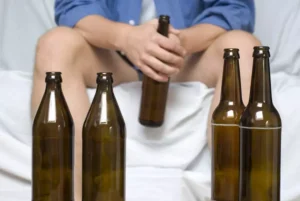Group therapy aims to teach and practice coping skills for navigating daily life after rehab. Your group leader will direct and encourage discussions surrounding triggers, coping strategies, and how to replace bad habits with new ones. Learning about the physical and mental health impacts of substance use can strengthen commitment to sobriety.
Types of therapy groups in substance abuse treatment
Having addiction recovery group topics to discuss is incredibly powerful, either on its own or in addition to individual therapy. Joining a substance abuse group can additionally improve an individual’s chance of long-term sobriety. Substance abuse groups provide a judgment-free environment for those in recovery to seek advice about various topics in group therapy with support from other members. Addiction recovery group topics and sessions are generally led by licensed therapists who prompt and guide discussion and encourage individuals to participate.
Substance abuse group topics to implement in your practice
A structured routine offers stability, helping individuals focus on positive habits. This topic helps members design daily schedules that include self-care, work, and relaxation. Creating a routine provides a sense of purpose and reduces the chances of falling back into unhealthy patterns. Financial stress is common in recovery, often due to past habits or addiction-related expenses. This discussion provides strategies for managing finances, setting realistic budgets, and reducing financial stress. Budgeting can promote a sense of control and reduce triggers related to financial strain.
Solution-Focused Brief Therapy Worksheets Bundle
- Recognizing one’s worth can foster resilience and encourage positive change.
- Embracing the power of laughter, creativity, and unity, addiction group therapy transforms the recovery journey through a kaleidoscope of engaging activities designed to heal, inspire, and empower.
- These groups often combine elements of psychotherapy with practical exercises designed to develop effective coping mechanisms.
- Activities such as mock interviews in role-playing can help individuals understand the impact of their substance use on others, fostering greater awareness and empathy.
- These groups support recovery by providing a judgment-free environment where members can show acceptance and offer validation.
- This makes group therapy a vital outlet and an essential part of your recovery journey.
By promoting honest discussions and shared insights, these groups help participants build stronger relationships and enhance their emotional well-being. This approach helps create a supportive environment where positive peer influence can significantly enhance motivation and commitment to recovery. Role-playing scenarios in group therapy are powerful tools for simulating real-life situations and practicing healthy coping mechanisms. Engaging in these workshops also fosters a sense of community, promoting trust and open communication among group members. The collaborative environment promotes sharing and mutual support, improving the overall effectiveness of the therapy. Coping skills workshops play a crucial role in teaching participants techniques for process group topics for substance abuse managing stress and anger, which are vital for maintaining sobriety.
Further, CRPs are well-positioned to address community-level change, for example by engaging in outreach or prevention efforts to reduce substance use and recovery-related stigma. Participants https://ecosoberhouse.com/ also cited the value of fostering a personal sense of self-efficacy or recovery orientation while in college. They noted that specific personal motivations or mindsets may buffer the challenges to sustainable recovery in the college environment. These may inspire the use of support resources, such as reaching out to social networks or engaging with CRPs.
Additionally, you might talk about the benefits of mindfulness and how it can help you maintain a sober lifestyle. The practice of focusing on what you can control instead of what you can’t goes hand-in-hand with the principles of the 12-Step Program. One primary focus in substance abuse treatment is learning how to replace bad habits with good ones.
Some activities and issues may be challenging to explore, but remember that you are in a safe space and under professional care. This topic explores strategies for maintaining healthy, supportive relationships that encourage sobriety. Members learn how to set boundaries, communicate openly, and build trust with others.
- Using the “glass half full” thought process, you’ll focus on the positive things in your life.
- Reenacting specific scenarios allows participants to explore various responses to triggers and stressors, encouraging more positive and adaptive behaviors.
Substance Abuse Group Therapy Topics
By incorporating these diverse and effective group therapy ideas, individuals can create a solid foundation for their recovery journey and maintain their commitment to sobriety. Specialized group therapy techniques, including Cognitive Behavioral Therapy (CBT) groups, process groups, and relapse prevention groups, provide tailored support to meet the unique needs of individuals in recovery. These exercises can be particularly effective in the early stages of recovery, helping participants stay focused and motivated, ultimately Sober living house supporting their mental health. By promoting self-awareness and emotional healing, these exercises contribute to the overall effectiveness of substance abuse treatment. The collaborative nature of process groups encourages open communication and mutual support, making them an effective component of substance abuse treatment. The following subsections will explore Cognitive Behavioral Therapy (CBT) groups, process groups, and relapse prevention groups, highlighting their specific benefits and applications in addiction treatment recovery.
.jpg)
.jpg)
.jpg)





